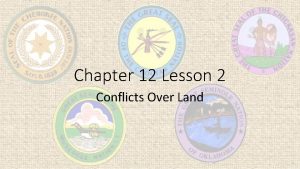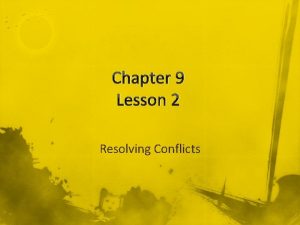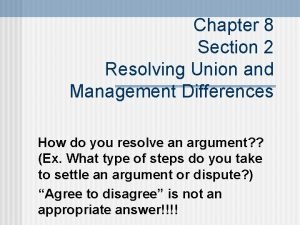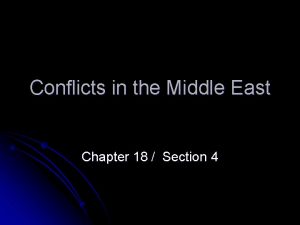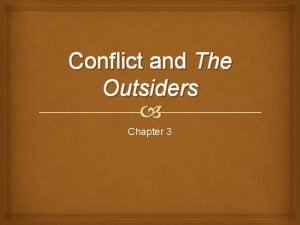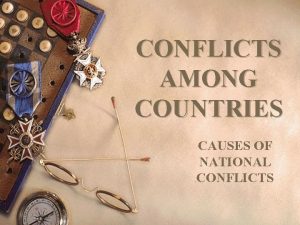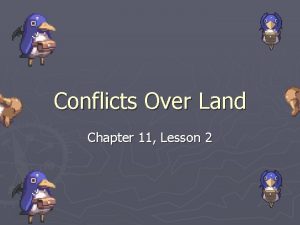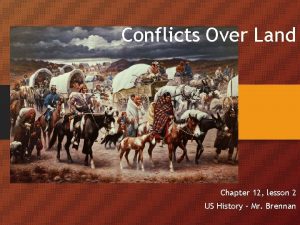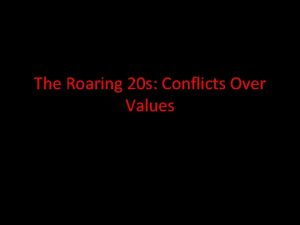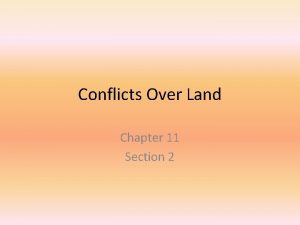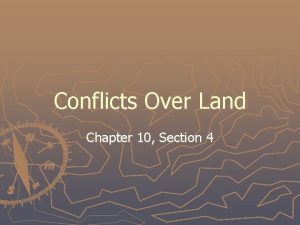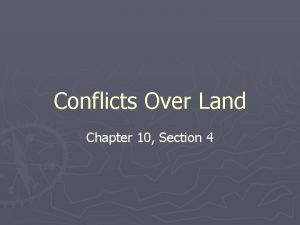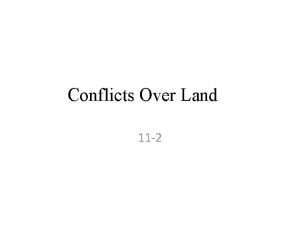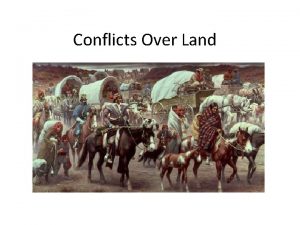Chapter 12 Lesson 2 Conflicts Over Land Removing














- Slides: 14

Chapter 12 Lesson 2 Conflicts Over Land

Removing Native Americans • “Five Civilized Tribes” • Cherokee, Creek, Seminole, Chickasaw, and Choctaw • Lived in Georgia, Alabama, Mississippi, and Florida • They were successful farming communities, had a documented and written language and were like many other American communities • Because of this, Americans considered them “civilized”

Removing Native Americans continued… • They were considered “civilized” but Americans still did not respect their rights • Some white people wanted Native Americans’ land • These Americans wanted the federal government to relocate the Native Americans to lands west of the Mississippi River • Andrew Jackson supported the demand for land • When he became president in 1829, he stated he would remove all Native Americans from the east and relocate them to the Great Plains out west

The Cherokee Versus Georgia • Indian Removal Act • Backed by Andrew Jackson in 1830 • This law allowed the federal government to pay Native Americans to move west • Jackson sent officials to make treaties with the Native Americans in the SE • In 1834, Congress established Indian Territory, mainly in modern day Oklahoma

The Cherokee Versus Georgia continued… • Most eastern Native America peoples felt forced to sell their land move west • The Cherokee refused to sell their land move • During the 1790 s, the federal government made a treaty that recognized the Cherokee as a separate nation • Georgia refused to accept this status • In 1830, Georgia made Cherokee land part of its state and started to enforce Georgia’s laws on them

The Cherokee Versus Georgia continued… • Cherokee people turned to the Supreme Court for help • Worcester v. Georgia (1832)- Chief Justice John Marshall ruled that Georgia had no right to interfere with Cherokee • President Andrew Jackson agreed with Georgia and declared that he would ignore the Court’s ruling and that if the Court wanted to enforce their ruling, they could try • No one was willing or able to challenge him

Trail of Tears • 1835 - Cherokee people were divided • 1835 - 500 Cherokee were convinced by the federal government to sign the Treaty of New Echota • In this treaty, the group agreed to give up all Cherokee land by 1838 • Cherokee Chief John Ross explained that the few Cherokee who signed the treaty did not speak for all the 17, 000 Cherokee in the area • Many senators also disagreed with this treaty, Danial Webster and Henry Clay thought it was unfair • President Jackson’s mind was not changed and the treaty was approved by a single vote in the Senate

Trail of Tears continued… • By the 1838 deadline, only about 2, 000 Cherokee had moved west • President Martin Van Buren ordered the army to move the rest of them • May 1838, General Scott arrived in the Cherokee Nation with 7, 000 troops to remove the remaining Cherokee by force • Between June and December 1838, soldiers rounded up Cherokee and forced them to march to Indian Territory in the West

Trails of Tears continued… • Before the march began, about 2, 000 Cherokee died when sickness broke out at the camp they were being held • Once on the trail, the Cherokee suffered from hunger and exposure to the elements • Another 2, 000 people died • When the relocation was finally over, about one fourth of the Cherokee population was dead • Cherokee call this the “Trail Where They Cried” Historians call this the “Trail of Tears”

Resistance and Removal • The Seminole tribe in Florida were the only group to successfully resist removal • Seminole leader Osceola refused to give up their land decided his tribe would fight instead

The Seminole Wars • 1835 - U. S. Army arrived in Florida to force the removal of the Seminole • December 1835, a group of Seminoles attached troops led by Major Francis Dade • Only a few soldiers survived • This convinced the U. S. Army to send more troops

The Seminole Wars continued… • 1835 -1842: roughly 3, 000 Seminoles and African Americans (Black Seminoles) fought against 30, 000 U. S. soldiers • Black Seminoles- escaped slaves from Georgia and South Carolina • The war cost the U. S. government over $20 million and 1, 500 soldiers • 1842 war stopped, many Seminole died, some were captured and forced to move west • 1855 war broke out again between the remaining Seminoles and Floridians • 1858 the few remaining Seminoles escaped into the Everglades, where they still are to this day

Life in the West • The Five Civilized Tribes were settle in the West • They developed their own constitutions and governments • They built farms and schools • The U. S. Army built forts in the area and promised to protect the Five Civilized Tribes

Samuel’s Memory Classwork https: //www. youtube. com/watch? v=Bfd. Hm 0 SNx. RM 1. How would you characterize Samuel? 2. In your opinion, what is the most difficult experience Samuel endured? 3. How would you feel if you were Samuel, and your family were forced to evacuate your home? 4. Why is Samuel bitter towards “white people? ” 5. If you could say something to Samuel to ease his pain or lessen his anger and hate, what would you say? 6. If you were a US soldier in 1830 ordered to evacuate the Cherokee, how would you realistically respond? 7. Why do you think Andrew Jackson signed the Indian Removal Act into law? 8. What choices/options did the Cherokee have in responding to this mistreatment? What choices/options did settlers who were also against such mistreatment have?
 Lesson 2 conflicts over land
Lesson 2 conflicts over land Chapter 9 resolving conflicts and preventing violence
Chapter 9 resolving conflicts and preventing violence Chapter 9 lesson 2 resolving conflicts
Chapter 9 lesson 2 resolving conflicts Chapter 9 lesson 2 resolving conflicts answer key
Chapter 9 lesson 2 resolving conflicts answer key Lesson 1 land biomes answer key
Lesson 1 land biomes answer key An area of land largely enclosed by higher land
An area of land largely enclosed by higher land A pointed piece of land extending into the sea
A pointed piece of land extending into the sea Chapter 18 section 4 conflicts in the middle east
Chapter 18 section 4 conflicts in the middle east Chapter 9 resolving conflicts and preventing violence
Chapter 9 resolving conflicts and preventing violence Conflict in the outsiders
Conflict in the outsiders A perennial mass of ice which moves over land
A perennial mass of ice which moves over land Over land by rail’, gustave dore, 1870
Over land by rail’, gustave dore, 1870 Why do hurricanes lose strength over land
Why do hurricanes lose strength over land Industrialism definition world history
Industrialism definition world history Removal of epsilon productions
Removal of epsilon productions
